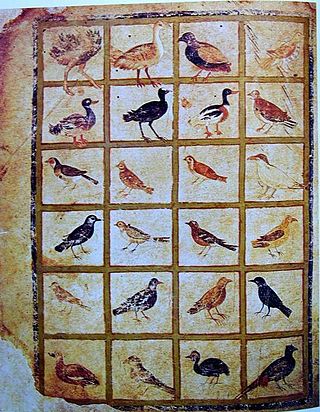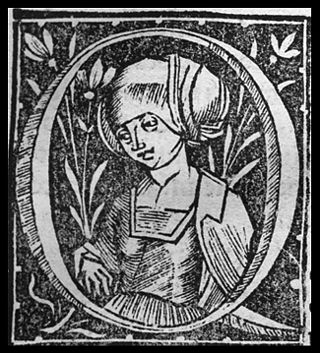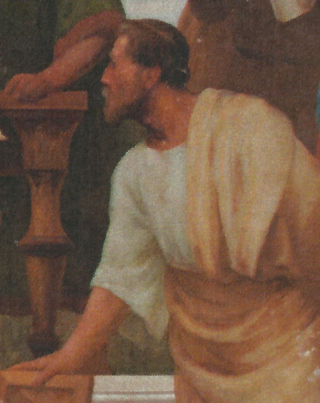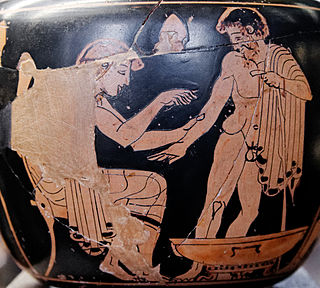
The history of medicine is both a study of medicine throughout history as well as a multidisciplinary field of study that seeks to explore and understand medical practices, both past and present, throughout human societies.
This is a timeline of the history of medicine and medical technology.

In the Middle Ages, the medicine of Western Europe was composed of a mixture of existing ideas from antiquity. In the Early Middle Ages, following the fall of the Western Roman Empire, standard medical knowledge was based chiefly upon surviving Greek and Roman texts, preserved in monasteries and elsewhere. Medieval medicine is widely misunderstood, thought of as a uniform attitude composed of placing hopes in the church and God to heal all sicknesses, while sickness itself exists as a product of destiny, sin, and astral influences as physical causes. On the other hand, medieval medicine, especially in the second half of the medieval period, became a formal body of theoretical knowledge and was institutionalized in the universities. Medieval medicine attributed illnesses, and disease, not to sinful behaviour, but to natural causes, and sin was connected to illness only in a more general sense of the view that disease manifested in humanity as a result of its fallen state from God. Medieval medicine also recognized that illnesses spread from person to person, that certain lifestyles may cause ill health, and some people have a greater predisposition towards bad health than others.

The Vienna Dioscurides or Vienna Dioscorides is an early 6th-century Byzantine Greek illuminated manuscript of an even earlier 1st century AD work, De materia medica by Pedanius Dioscorides in uncial script. It is an important and rare example of a late antique scientific text. After residing in Constantinople for just over a thousand years, the text passed to the Holy Roman Emperor in Vienna in the 16th century, a century after the city fell to the Ottoman Empire.

In the history of medicine, "Islamic medicine" is the science of medicine developed in the Middle East, and usually written in Arabic, the lingua franca of Islamic civilization.

Paul of Aegina or Paulus Aegineta was a 7th-century Byzantine Greek physician best known for writing the medical encyclopedia Medical Compendium in Seven Books. He is considered the “Father of Early Medical Writing”. For many years in the Byzantine Empire, his works contained the sum of all Western medical knowledge and was unrivaled in its accuracy and completeness.

Alexander of Tralles was one of the most eminent physicians in the Byzantine Empire. His birth date may safely be put in the 6th century AD, for he mentions Aëtius Amidenus, who probably did not write until the end of the 5th or the beginning of the 6th century, and he is himself quoted by Paul of Aegina, who is supposed to have lived in the 7th century; besides which, he is mentioned as a contemporary of Agathias, who set about writing his History in the beginning of the reign of Justin II, about 565.

Aëtius of Amida was a Byzantine Greek physician and medical writer, particularly distinguished by the extent of his erudition. His birth and death years are not known, but his writings appear to date from the end of the 5th century or the beginning of the 6th.

The Morgan Dioscurides is a 10th-century Byzantine illuminated copy of the De Materia Medica by the Greek physician Dioscurides, which covers the medical use of herbs and other natural resources and is widely regarded as the most comprehensive collection of naturally occurring resources and their medical uses. Today, it is regarded as an early, fairly accurate, form of pharmacological text, in herbal form.
Johannes Zacharias Actuarius, son of Zacharias, was a Byzantine physician in Constantinople. He is given the title of Actuarius, a dignity frequently conferred at that court upon physicians.

Ancient Greek medicine was a compilation of theories and practices that were constantly expanding through new ideologies and trials. The Greek term for medicine was iatrikē. Many components were considered in ancient Greek medicine, intertwining the spiritual with the physical. Specifically, the ancient Greeks believed health was affected by the humors, geographic location, social class, diet, trauma, beliefs, and mindset. Early on the ancient Greeks believed that illnesses were "divine punishments" and that healing was a "gift from the Gods". As trials continued wherein theories were tested against symptoms and results, the pure spiritual beliefs regarding "punishments" and "gifts" were replaced with a foundation based in the physical, i.e., cause and effect.

Medicine in ancient Rome was highly influenced by ancient Greek medicine, but also developed new practices through knowledge of the Hippocratic Corpus combined with use of the treatment of diet, regimen, along with surgical procedures. This was most notably seen through the works of two of the prominent Greek physicians, Dioscorides and Galen, who practiced medicine and recorded their discoveries. This is contrary to two other physicians like Soranus of Ephesus and Asclepiades of Bithynia, who practiced medicine both in outside territories and in ancient Roman territory, subsequently. Dioscorides was a Roman army physician, Soranus was a representative for the Methodic school of medicine, Galen performed public demonstrations, and Asclepiades was a leading Roman physician. These four physicians all had knowledge of medicine, ailments, and treatments that were healing, long lasting and influential to human history.

Scientific scholarship during the Byzantine Empire played an important role in the transmission of classical knowledge to the Islamic world and to Renaissance Italy, and also in the transmission of Islamic science to Renaissance Italy. Its rich historiographical tradition preserved ancient knowledge upon which splendid art, architecture, literature and technological achievements were built. Byzantines stood behind several technological advancements.

Greece played a crucial role in the transmission of classical knowledge to the Islamic world. Its rich historiographical tradition preserved Ancient Greek knowledge upon which Islamic art, architecture, literature, philosophy and technological achievements were built. Ibn Khaldun once noted; The sciences of only one nation, the Greeks, have come down to us, because they were translated through Al-Ma'mun’s efforts. He was successful in this direction because he had many translators at his disposal and spent much money in this connection.
Metrodora was possibly the author of an ancient Greek medical text, On the Diseases and Cures of Women. She is known from a single Byzantine manuscript in the collection of the Laurentian Library in Florence. If she existed, her dates are disputed, with scholars' suggestions ranging from the first to the sixth century AD, and the latest possible date being the composition of the Laurentian manuscript in the tenth or eleventh century. Her name is also disputed; some scholars have suggested that Metrodora was a pseudonym or even the misinterpretation of the title of her work.
Iatrosophia is a genre of Greek medical literature, originating in Byzantium. It comprises medical handbooks containing recipes or therapeutic advice, but the term can also be used of orally transmitted medical knowledge.

Innovation in Byzantine medicine: the writings of John Zacharias Aktouarios (c.1275-c.1330) is a 2020 monograph by Greek author and academic Petros Bouras-Vallianatos. The book delves into the largely unexplored works of late Byzantine physician John Zacharias Aktouarios, known for his contributions to uroscopy, physiology, and pharmacology. It highlights Aktouarios' original theories, including the introduction of a new urine vial divided into eleven areas and his theory about the connection of each area with a certain part of the human body, and provides insight into the intellectual and social contexts of medical practice in the Byzantine era. Bouras-Vallianatos argues that Aktouarios' medical works were remarkably open to knowledge from outside Byzantium and displayed significant originality. The analysis of Aktouarios's treatises is based on a wide range of manuscripts and sources, shedding new light on Byzantine medical thought and its cultural exchanges with the Latin and Islamic worlds.














